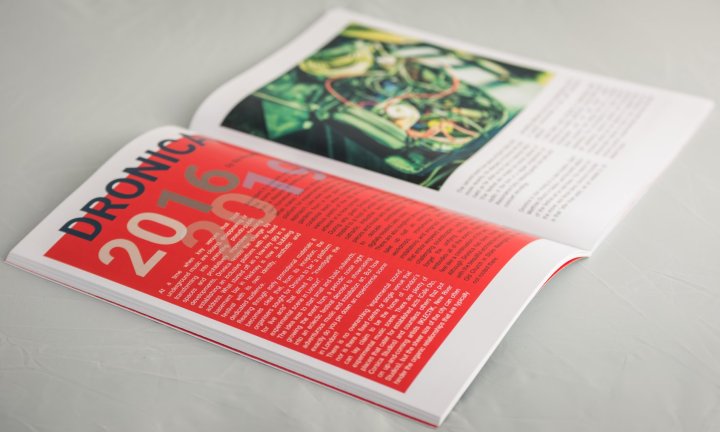
‘N16 9ES – three years of Dronica’ is a self-produced photo-booklet and audio cd compilation, a tribute to the polymorphic, alternative art scene that has revolved around the festival for the past three years. The idea is to define this experience through Matteo Favero’s shots, accompanied by a selection of the music that lived through the walls of The Old Church, an Elizabethan building located in Stoke Newington, which hosted mostly of the past editions. N16 9ES is also and more importantly a passionate compendium that tells about our/your years of Dronica, a token of love that we dedicate to all of the artists who supported our efforts, to the crew that helped us with immense enthusiasm sacrificing their time and energy, and last but not least, to the public that nurtures and stimulates our researches.
N16 9ES – three years of Dronica’ is available online at the link below:
https://n169es.bandcamp.com/releases

At a time when key venues that host underground music are closing, disappearing or transforming into uninviting pseudo-public spaces and prohibitively expensive housing developments, Dronica resists the change by establishing an inclusive platform with no fixed address. What started off as a low-key gig in a basement bar in Hackney is now a bubbling festival with its own identity, aesthetic and dedicated audience.
Reading through early promotional materials it becomes clear that, from its inception, the organisers sought for Dronica to be “a platform for live acts” that aimed to “investigate the experimental scene in London”. The idea was to start small and build outwards, growing the event from a periodic noise night into an eclectic festival devoted to showcasing adventurous music and installation art.

But how exactly do you pin down an experimental scene in London? There is no overarching ‘experimental sound’, nor is there a fixed centre or single venue that can lay claim to be the home of London’s experimental music scene. There are plenty of places that cater for established acts (Cafe Oto, Corsica Studios) and countless others that put on up-and-coming artists (IKLECTIK, New River Studios), but the sheer size of the city can often hinder the organic relationships that are typically developed in close-knit communities. The scene exists, but it can find itself spread thin; a diaspora presiding within the walls of its own hometown.
What makes Dronica different from any other platform for experimental music is the curatorial approach. Like keen botanists who grow whole gardens from a few plant cuttings, Dronica’s curatorial team draw independent artists from various points of the city and showcases their artwork in a new context.

During any given Dronica event you can be treated to a host of artistic styles that vary from cathartic industrial techno, textural ambient pieces and noise sets derived from bee samples to delicate contrabassoon pieces and digitally-treated cello solos. There are also longform drone compositions that take up half an evening, coupled with workshops, monumental paintings, light installations and enigmatic outdoor projections that entice wayward walk-ins to dip their ears in challenging soundscapes. Lastly, one shouldn’t forget the unifying design aesthetic that embodies all of the events, making each night feel like a continuation of the last.

Although Dronica has been closely associated with the beautiful architecture and location of the Old Church in Stoke Newington, the festival is not rooted there. The second event took place at Ryan’s Bar and, more recently, the afterparty of Dronica #9 was held as far afield as the Yard in Hackney Wick. The festival also inhabits the liminal spaces of radio in the form of a regular programme on Resonance Extra, featuring guests, live sets and concert recordings.
Dronica is now moving to a new location, Saint Matthias Church in Dalston, and the tenth edition of the festival will be held there. The reason for the move, says Nicola Serra, Dronica’s founder, is that “after three years, we all needed to do something different and more challenging, but in a similar environment in line with previous editions”.
I have been lucky enough to collaborate with Dronica as a writer, performer, visual artist and broadcaster over the last three years. Each occasion had always felt like a unique experience. The convergence of noise lovers, DIY aesthetics, diverse content and Dronica’s inclusive nature are all reasons to support this idiosyncratic festival so that it can continue to nurture London’s experimental scene far into the distant future.
Words by: Ilia Rogatchevski


